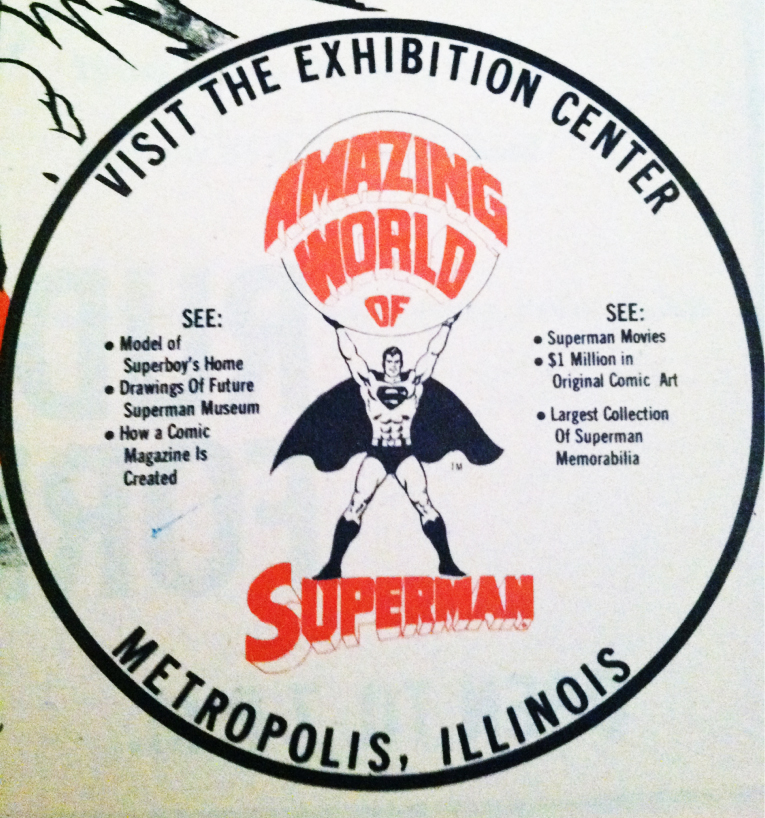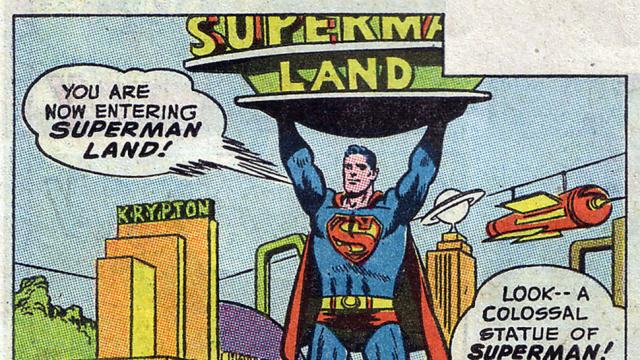Until the 1970s, the tiny southern Illinois town of Metropolis had two claims to fame: The long-demolished fort George Washington had founded nearby, and the Uranium Hexafluoride Processing Facility, which employed hundreds of its citizens. But in June 1972, the Illinois House of Representatives and DC Comics gave Metropolis a new history. They declared it the official hometown of Superman.
Metropolis was named long before the Man of Steel was even a blot in Jerry Siegel’s inkwell; its 19th century founders had aspirations that their parcel of land would become part of the burgeoning industrial corridor emerging in the Ohio River Valley. It did not. Metropolis struggled through two world wars and a Depression. So as DC Comics’ Superman franchise rose to prominence during the 1950s, the beleaguered citizens of real-life Metropolis were primed to embrace the fact that Superman lived in a city that — entirely coincidentally — shared the same name.
Metropolis began to style itself as the very real town where Superman thrived. It named a local paper after The Daily Planet. In its City Hall, a supply of free “Kryptonite” was always on-hand for curious kids. The fact that Metropolis, Illinois much more closely resembled Smallville, Clark Kent’s fictional hometown, than the Manhattan-esque Metropolis didn’t seem to matter.
Such a blatant breach of copyright normally wouldn’t have flown with DC Comics. But the comic juggernaut’s owners had their own reasons for allowing Illinois’ Metropolis to become Superman’s Metropolis: Their long-term hopes to build a Superman-themed amusement park. The assimilation of the fictional Metropolis by the real suited both parties — and in January of 1972, a group of DC Comics representatives (along with a guy wearing George Reeves’ actual Superman suit) declared Metropolis, Illinois the official hometown of Superman.
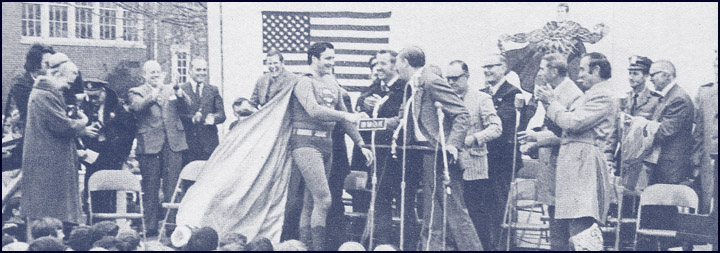
Image via Comic Coverage.
But that was only the beginning. Momentum was building behind the myth. A few months later, the Illinois House of Representatives passed Resolution 572, which declared Metropolis the official hometown of the Man of Steel in the eyes of the state government. Soon, city officials (it’s unclear exactly whom) were proposing an idea that, in theory, would wrest Metropolis from its economic slump and give DC the attraction it had always wanted: The construction of the Amazing World of Superman, a massive theme park devoted to the Man of Steel.
Comic artist Neal Adams was commissioned to draw up a tentative design, starting with a 200-foot-tall statue of Superman that would serve as an entryway into the park. Published in 2008 on Comic Coverage, Adams’ plans show a Googie-esque red roof sheltering an assortment of attractions, ranging from a Bucky Fuller-style Dymaxion Dome (the Bottle City of Kandor) to the main street of Smallville. There was also a supermarket and a playground, hinting at the unspoken hope that Superman Land would benefit Metropolis’ citizens as well as tourists.
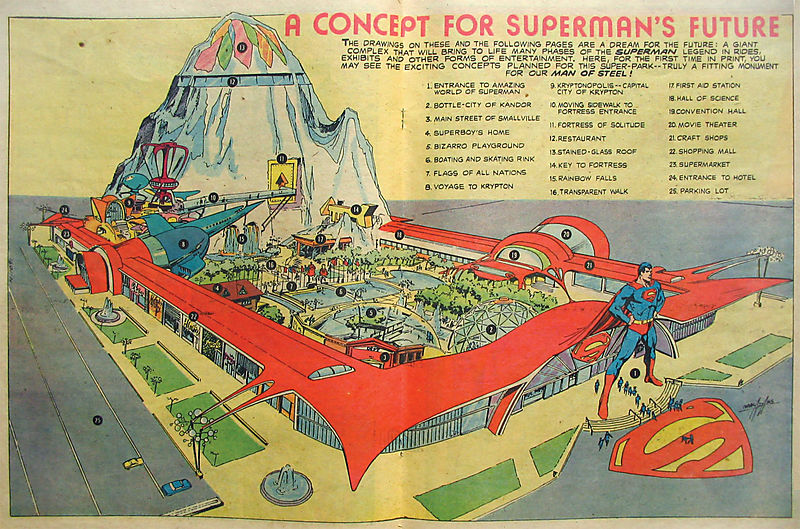
There would also be a massive Fortress of Solitude, topped by a stained glass roof:

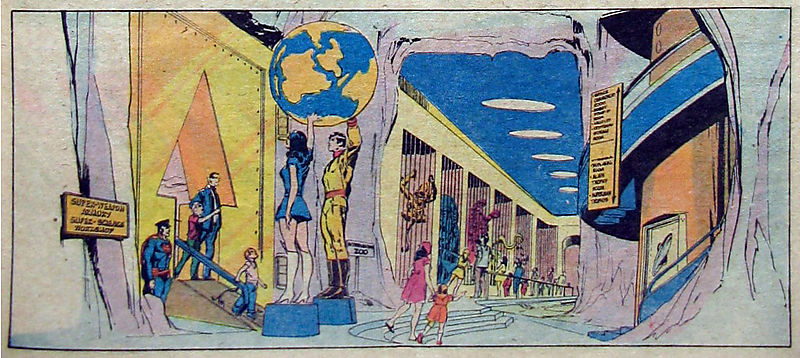
Plus, a gallery devoted to the villains:
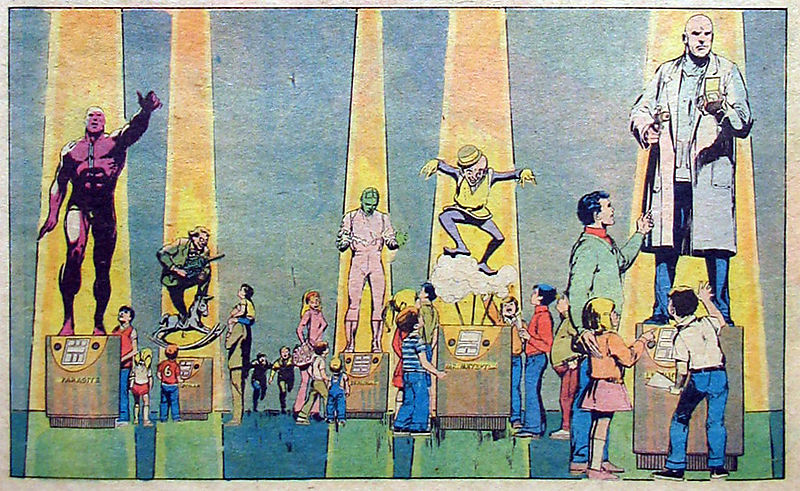
All in all, the plan would have cost the city $US50 million, or roughly $US270,000,000 in today’s dollars. It’s hard to say who was pushing harder for the scheme — city officials or DC Comics — but the same year, DC published a special edition comic devoted to the Amazing World of Superman, hyping up the forthcoming theme park with fans. A small exhibition center was opened, where models of the park and memorabilia, like bumper stickers, were sold:

Image via Ebay.
And then it all fell apart.
Only a few months after Superman Land seemed certain, OPEC proclaimed an embargo on oil exports to the US as retaliation for aiding Israel, spurring the oil crisis. The future of car travel — especially for frivolities like vacation — seemed uncertain. “The gasoline crisis of the early 70’s dramatically impacted tourism throughout the country,” explains Mark Engblom, “leaving many families unable to afford the long drive to play in the Bizarro Playground and shop for groceries in the Amazing World of Superman supermarket.”
Superman Land was doomed. “The town took over a decade to recover,” explains the owner of Metropolis’ small Superman Museum, a storefront labour-of-love that opened in 1993. While Metropolis eventually raised enough cash for a succession of Superman statues, none of them would ever compare to the gargantuan one planned during the summer of 1973.
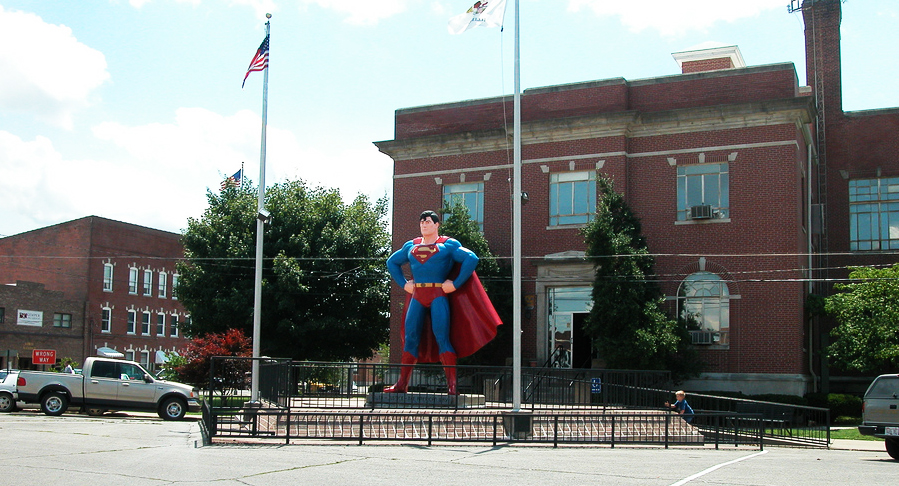
Image by David Wilson.
On the national stage, Metropolis is still known for its Uranium Processing Plant. 40-two former employees have died from cancer caused by radiation, and the US government has paid out $US15.2 million to workers who were exposed between 1959 and 1976 — around the same time Metropolis was planning the Amazing World of Superman. In 2011, the operator of the plant pleaded guilty to releasing radioactive mud throughout the town.
Metropolis certainly isn’t the first small American town to fall prey to the dream of its own amusement park. Walt Disney’s success lured dozens of small, blue-collar towns to pursue similar schemes — the trope is pervasive enough that it’s been memorialised in everything from The Simpsons to Parks and Recreation. But Metropolis’ story is compelling in a uniquely symbolic way: That the dreams of a small American town would be pegged to a superhero made of steel, and would be crushed by an over-reliance on oil.
All of Neal Adams’ illustrations come courtesy of Comic Coverage, which has more information about Metropolis and the failed park here.
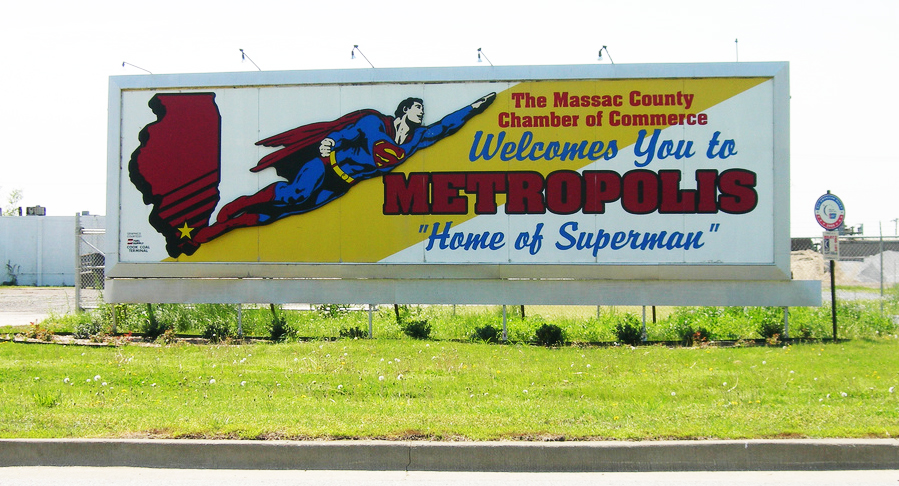
Image by Jimmy Emerson.

Image via.
